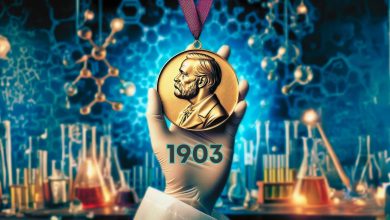The Vast Unit of Chemistry: The Number of Mole

The Vast Unit of Chemistry: The Number of Mole
You probably remember the concept of the number of moles from your chemistry classes. Chemists do all the calculations with reference to this complex number called “mole”. In fact, all elements and compounds always react with each other in proportions associated with this number and eventually form new products. Therefore, the number of moles has a very critical role in understanding how nature works. Today we’re going to talk about how big the number of moles is and how small an atom actually is.
What is Mole Number?
The number of moles may seem a little confusing at first glance. But it’s actually a pretty simple concept. Let’s consider a few examples that we use in everyday language, and then move on to the mole.
For example, when we say a pair of gloves, we all think of two gloves. Although we did not use the word two in this example, we can easily understand the situation with the word pair.
Or when we say a deck, the number 10 comes to mind. When we say a dozen apples, there are 12 apples.
The number of moles, or Avogadro’s Number, is exactly such an abbreviation. The number we mean is 6.02×10 23. For those who are unfamiliar with this scientific notation, let’s explain it briefly. This scientific notation tells us that 6.02 has 23 zeros next to it. Similarly, we can specify that there are three zeros in 1000 by typing 10^3. To be even more explanatory, let’s write the full version of this number:
60200000000000000000000000
The mathematical name for this number is 602 sextillion.
When we say 1 mole, this number comes to mind. Just as the number 4 comes to mind when we say two pairs. When we say two moles, we see the moles multiplied by two. All reaction calculations run on this simple abbreviation.
Pushing the Limits of the Imagination
Sometimes, when we show the numbers on paper like this, we can’t understand how big they are. Now let’s push the limits of our imagination and try to bring this number to life with a few analogies.
Suppose all people in the world work around 7 hours a day and work nonstop, counting an atom every second. This time, it takes about 10 million years for all people currently living on earth to reach the number of atoms of 1 mole.
Let’s give another example of money:
Let’s say, You entered the contest, “Who Wants To Be A Mole-naire?”. And congratulations! You have won the grand prize of 1 mol dollars, i.e. 6.02×10 23 dollars. You don’t have to worry about money anymore. Well, could you completely run out of this money before you die?
As we said at the beginning, let’s push the limits of imagination. You’ve hired countless people and you’re handing out money to everyone. Suppose you spend $1 billion every second. Even if you live a hundred years, 99.99% of your money will still remain untouched when you die. Well, in the scenario where you spend 1 billion dollars every second, how long does it take to run out of all that money:
19 Billion Years!
That’s why Avogadro is an unimaginably large number.

An Example from More Daily Life: 1 Mol of Water
1 mole of water is another way of saying 18.01 mL of water. 18 mL of water means approximately 3.5 teaspoons of water. And yes, only 3.5 teaspoons of water contain as many water molecules as we just tried to imagine. Think about the number of water molecules that enter your body when you drink a glass of water. This ordinary event, which we do maybe dozens of times a day, can be a good example for us to understand how small a molecule actually is.
Wait, it’s not over yet. A water molecule consists of 2 Hydrogen and 1 Oxygen atom. That is, there are 3 atoms in a molecule. To calculate the number of atoms in 3.5 teaspoons of water, we need to multiply that huge number of moles by 3.
Let’s push the limits even further. Each Hydrogen atom consists of 1 electron while oxygen atoms consist of 8 electrons. In other words, we can multiply the number we find in a mole by 10 to make an approximation of the number of electrons.
Moreover, water is one of the simplest molecules. Chemistry is a world with much more complex and large molecules.
Impossibility of pure substance
The immensity of Avagadro’s number is proof that the idea of the omnipresence of all chemical elements is well-founded. (We can detect at least a few atoms of each element everywhere.) Because Avagadro’s number is so large, it is not possible to try to obtain an absolutely pure substance that contains no impurities. It is impossible to capture a foreign atom from among the 602 sextillion atoms without introducing new impurities into the process.
Here we end this journey we made to the limits of imagination. We hope we have helped you to grasp a little of this huge number.
See you again in the days when our only problem is: not being able to finish our one-mole dollar money 🙂
References and Further Readings
TEDEducation. (2012, September 11). How big is a mole? (not the animal, the other one.) – daniel dulek. Retrieved May 15, 2021, from https://www.youtube.com/watch?v=TEl4jeETVmg
TheWaqasahmed7. (2016, September 04). How big is avogadro’s number. Retrieved May 15, 2021, from https://www.youtube.com/watch?v=oQ_L4wRVUI0
Vlasov, LN, & Trifonov, DN (1977). 107 stories about chemistry . Moscow: Mir.
You can access the sources of the images used by clicking on the images.
The proofreading has been done by Asu Pelin Akköse and Mete Esencan.
Would you like to support us?
- For more detailed information, you can check our “Support Us!” page!









